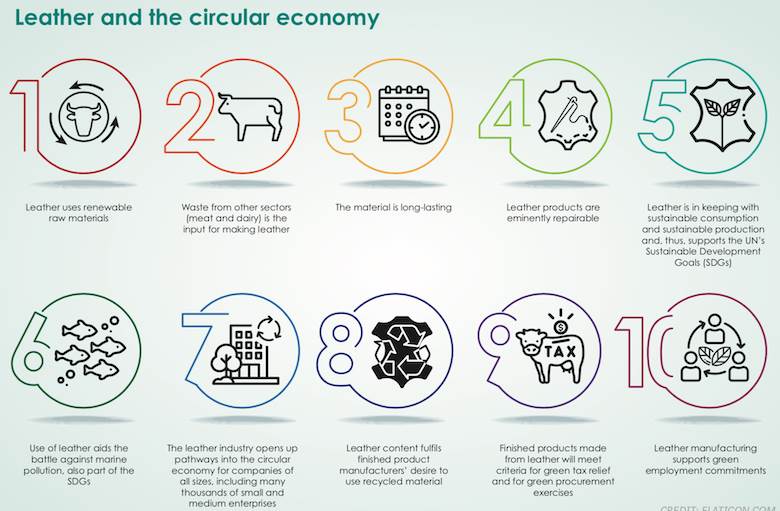World Leather announces major new collection of articles on Leather and the Circular Economy
16/01/2020

World Leather has decided to begin 2020 with a new Leather and the Circular Economy section. We will provide a platform for tanners, leather chemical companies and finished product manufacturers to share their opinions and experiences on this subject, placing the articles in two categories: thought leadership and a collection of case studies called ‘circular stories’.
In each article we will examine the ways in which leather responds exceptionally well to the demands arising from the shift that is already under way from a linear model for the global economy to a circular one. Close reading of documents such as The European Green Deal, published in December, support our claim that leather production and leather use provide an excellent example of how the circular economy can work.
In spite of the fact that The European Green Deal does not mention leather even once, ten clear reasons emerge from it to show why leather is an ideal example of the new model. We have collected these into ten criteria that will form the basis of our Leather and the Circular Economy articles and present them in an infographic here.
For millennia, skilled people have been taking a by-product from meat and, rather than let it go to waste, have turned it into a material whose versatility, durability, naturalness, sensuality, renewability and beauty knows no parallel. To use leather in shoes, furniture, automotive, aviation and other forms of transport, interior design, handbags or apparel is to choose a raw material that might, otherwise, have gone to waste. It is a material that you can repair and recover for reuse at the end of a product’s useful life, preventing waste again and avoiding the need to extract new resources for the products we buy. It’s the circular economy material par excellence and it’s time more people realised that.
We hope companies across the global leather sector and industry commentators will welcome the material we publish and engage with us to find out how they can contribute. A good starting point is to ask themselves if any aspect of their work exemplifies any of the ten criteria. If it does, it means they have a circular story to tell and we want them to tell it to us.











